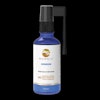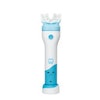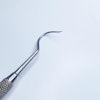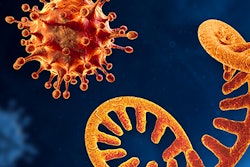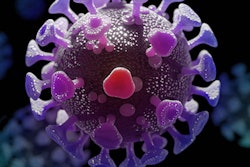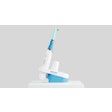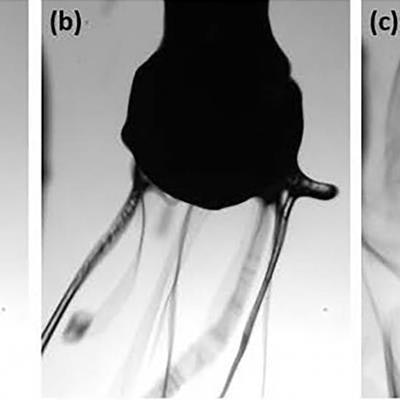
Adding a polymer to a dental office's water system can completely eliminate aerosols generated by ultrasonic scalers and drills, reducing the transmission risk of pathogens such as SARS-CoV-2, according to a study published online August 25 in Physics of Fluids.
Adding polyacrylic acid to a dental office's irrigation system changes the way water responds; the water and polymer solution forms strands that remain near the tips of dental tools, preventing droplets from entering the air, according to the authors.
"By altering the physical response of water to the rotary or ultrasonic forces that are used in dentistry, the generation of aerosol particles and the distance any aerosol may spread beyond the point of generation can be markedly suppressed or completely eliminated in comparison to water for both the ultrasonic scaler and dental handpiece," wrote the group, led by Jevon Plog, a doctoral student in the department of mechanical and industrial engineering at the University of Illinois at Chicago (UIC). The study was supported by discretionary funds from the UIC College of Dentistry.
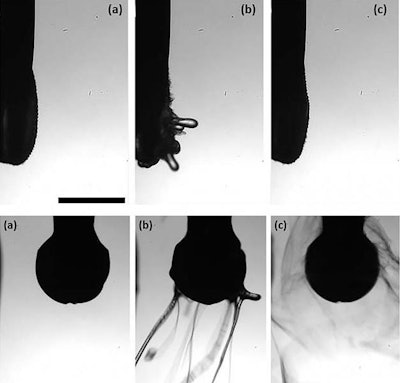 The polymer forms snakelike threads near the tip of a vibrating ultrasonic scaler (top), and it forms spools near the tip of a turbine-driven dental drill, eliminating aerosolization completely. Image courtesy of Jevon Plog.
The polymer forms snakelike threads near the tip of a vibrating ultrasonic scaler (top), and it forms spools near the tip of a turbine-driven dental drill, eliminating aerosolization completely. Image courtesy of Jevon Plog.Real risk
Particles smaller than 50 µm in diameter, suspended in the air until aspirated or ultimately settling on surfaces, pose the greatest risk to dental teams. A building's ventilation system can add to the threat, and the ultrasonic scalers and air-driven high-speed handpieces used at dental practices have been recognized as the worst aerosol source. Properly wearing personal protective equipment (PPE), having patients gargle with a preprocedural rinse, using rubber dam isolation, and avoiding aerosol-generating procedures can help curb the transmission of bacteria and viruses, including SARS-CoV-2. Engineering controls, such as removing droplets from the air and diverting airflow, may also offer greater protection with higher price tags.
The above measures incrementally reduce aerosol generation and the transmission of infectious diseases, but none knock out the risk completely. Maintaining these practices is not only costly but also relies on human compliance. Knowing the high risk that aerosolization poses to dentists, hygienists, and patients during the COVID-19 pandemic, the researchers sought to suppress disease-causing droplets by testing polyacrylic acid, a food-grade, high-molecular weight polymer approved by the U.S. Food and Drug Administration. Polyacrylic acid is commonly used in disposable diapers and in the absorbent pads in packaging for fresh meat.
Put to the test
A semiportable scaler that requires 120 V AC and a 26.5 pound-force per square inch (psi) water supply with a flow rate of 40.6 mL/min and a turbine-driven drill were used to test the use of a polymer. The scaler tips vibrate at 30 kHz and are intended to be cooled and flushed with water delivered as a film released through a small opening in the bend of the scaler, according to the authors.
Using a dilute aqueous solution of 2 wt% of polyacrylic acid instead of water, the aerosolization from the scaler was suppressed completely. When the polymer admixture was used to irrigate, it prevented the bursts of water that typically resulted in potentially virus-carrying aerosols being propelled through the air. Polymer macromolecules suppress water aerosolization because they stretch, like rubber bands. Therefore, as a scaler or drill plunges into a polymer solution, the solution threads into snakelike ribbons that snap back to the tip of the instrument.
Furthermore, the shear viscosity of the polyacrylic acid was about six times that of water, the group found. This is because the small admixture of polymers exhibited coil-stretch transition, allowing for the complete elimination of droplets coming from the dental tools. The polyacrylic acid was effective due to its high elongational viscosity, which is a liquid's resistance to elongational deformation, as well as it being easy to pump.
The researchers have filed for a provisional patent with the U.S. Patent and Trademark Office for this solution.
Another rung on the safety ladder
Wearing appropriate PPE, staggering patients to allow for social distancing, and other measures have helped reduce the spread of SARS-CoV-2, and all would still be needed if this engineering approach were implemented. However, this strategy offers more, including a cost-effective way to make dental offices safer, the authors wrote.
"The key advantage of targeting the source of aerosol generation is that it limits the inherent risks of human error associated with the implementation of other suggested engineering controls currently advocated in controlling aerosol transmission in dentistry," they wrote.

